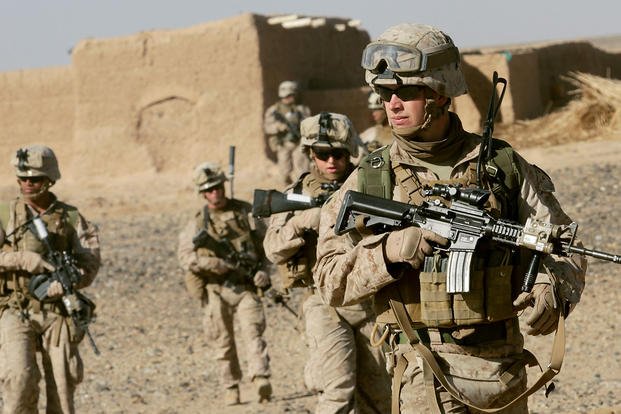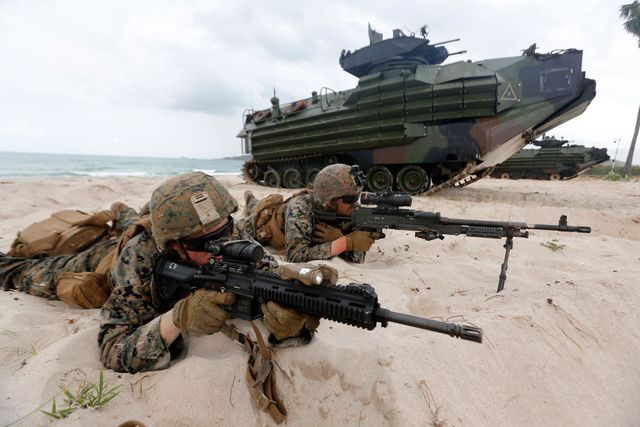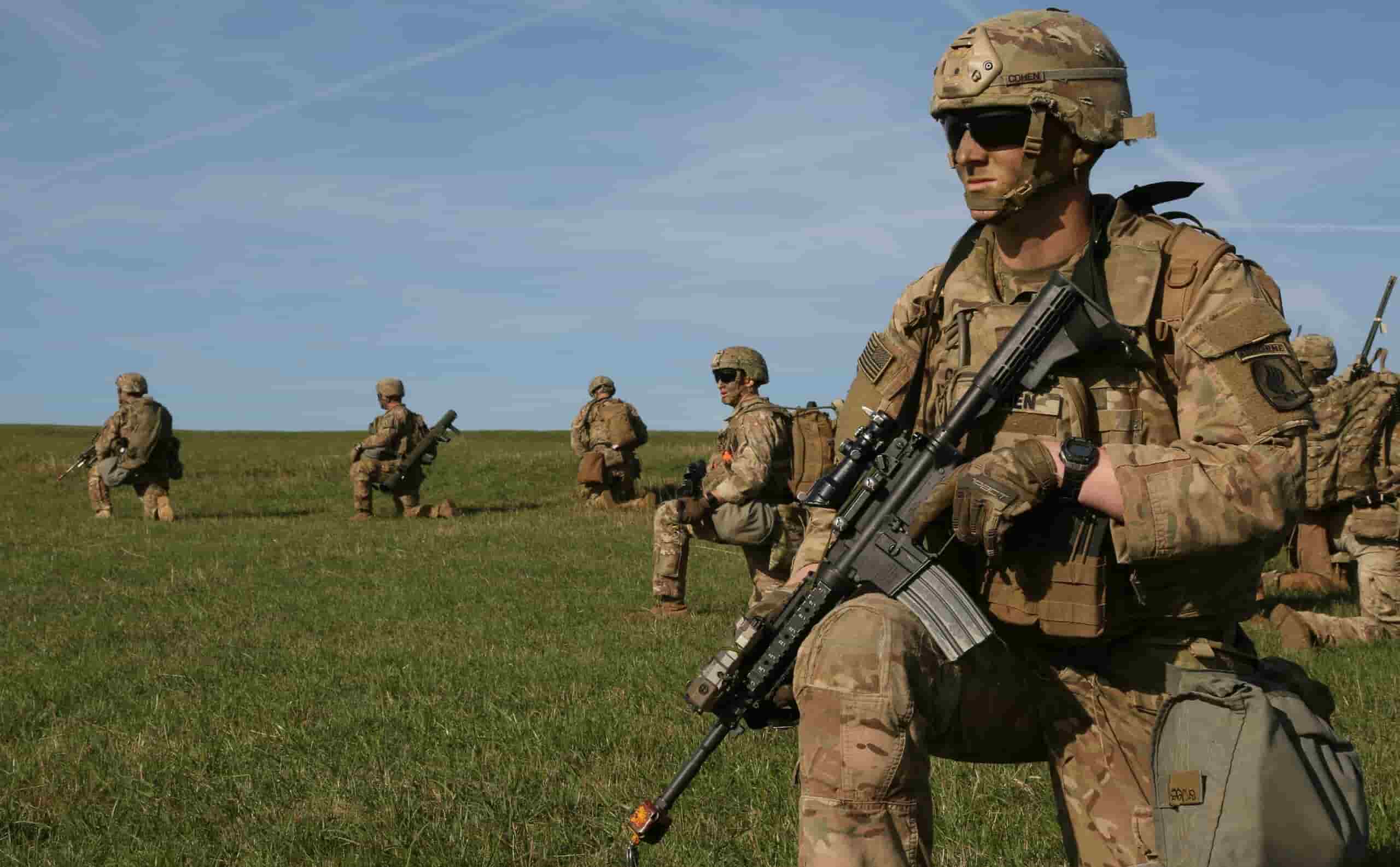One of the first things you learn on your way to becoming a Marine is the adage “Every Marine is a rifleman.” While there has been some debate in recent years about whether “rifleman” is the proper term for the type of general-purpose warfighter required to win 21st-century wars, the underlying idea remains as true as ever. You’ll be prepared, fit, and ready to fight whether you’re a supply clerk or an infantry officer in the Marine Corps. “Every Marine a rifleman” is more than a catchphrase; it’s a promise to America’s enemies.
Marines are well-known for their grit, bravery, and physical fitness. Maintaining current Marine weight requirements is a critical component of preserving that reputation. Marine rifle qualifications are critical in ensuring that US Marines are battle-ready, but few factors may have a greater impact on your ability to perform under pressure than your physical condition. A Marine in good physical condition can push harder, fight for longer periods, and avoid exhaustion, which can make decision-making difficult. An unfit Marine, on the other hand, has a negative impact not only on their performance but also on the overall performance of the unit.
That is why the Marine Corps places a priority on not just completing fitness exams but also ensuring that Marines meet specified physical requirements.
Remember to take our free ASVAB practice test 2024 if you want to join the military.
What Are Marine Height and Weight Standards?

The Marine Corps weight and body fat requirements are focused on health and performance, not on appearance. When a marine’s body weight and body fat exceed the maximum limitations, they are regarded as not within these criteria.
U.S. Marines Weight Requirements
A Marine is expected to satisfy fitness requirements in which he or she must be able to maintain a body mass that is 25% less than when they entered service. Weight requirements for Marines are between 160 and 170 pounds on average. The Body Mass Index (BMI) formula is used by the Marine Corps to evaluate whether an individual is “overweight,” “ideal weight,” or “normal.”
U.S. Marine Height Requirements
Within the Marine Corps, the height restrictions differ per service. A male Marine in the field stands 5’9′′ tall, whereas a female Marine stands 5’4′′ tall. If you don’t satisfy these height standards, you may be rejected from participating or your training may be postponed until you do.
Read more >> Navy Weight Requirements In The US Military
2024 Marine Corps Height and Weight Charts
You can use the Marine weight chart below to see if you meet the Marine Corps male and female height and weight standards in 2024. The charts are updated as of 2018.
Marine Corps Height and Weight Charts For Men
| Height (inches) | Min Weight (pounds) | Max Weight (pounds) |
|---|---|---|
| 58 | 91 | 132 |
| 59 | 94 | 136 |
| 60 | 97 | 141 |
| 61 | 100 | 146 |
| 62 | 104 | 150 |
| 63 | 107 | 155 |
| 64 | 110 | 160 |
| 65 | 114 | 165 |
| 66 | 117 | 170 |
| 67 | 121 | 176 |
| 68 | 125 | 181 |
| 69 | 128 | 186 |
| 70 | 132 | 192 |
| 71 | 136 | 197 |
| 72 | 140 | 203 |
| 73 | 144 | 208 |
| 74 | 148 | 214 |
| 75 | 152 | 220 |
| 76 | 156 | 226 |
| 77 | 160 | 236 |
| 78 | 164 | 238 |
| 79 | 168 | 244 |
| 80 | 173 | 250 |
| Max Body Fat %: 18% |
Marine Corps Height and Weight Charts For Women
| Height (inches) | Min Weight (pounds) | Max Weight (pounds) |
|---|---|---|
| 58 | 91 | 120 |
| 59 | 94 | 124 |
| 60 | 97 | 128 |
| 61 | 100 | 132 |
| 62 | 104 | 137 |
| 63 | 107 | 141 |
| 64 | 110 | 146 |
| 65 | 114 | 150 |
| 66 | 117 | 155 |
| 67 | 121 | 160 |
| 68 | 125 | 164 |
| 69 | 128 | 169 |
| 70 | 132 | 174 |
| 71 | 136 | 179 |
| 72 | 140 | 184 |
| 73 | 144 | 189 |
| 74 | 148 | 195 |
| 75 | 152 | 200 |
| 76 | 156 | 205 |
| 77 | 160 | 211 |
| 78 | 164 | 216 |
| 79 | 168 | 222 |
| 80 | 173 | 228 |
| Max Body Fat %: 26% |
Simply enter your height in inches in the left-hand column to determine the lowest and maximum acceptable weight for your height. Then follow that row across to discover the lowest allowable weight for that height, as well as the maximum weights allowed for both men and women.
When determining whether or not you meet the Marine weight requirements, remember to use an accurate scale.
Note: Marines who do not meet the minimum height and weight requirements for Marines will not be punished. Commanders may refer such Marines for a medical examination to determine their health status.
How Do Marines Measure Height and Weight?

Height measurement is taken by:
The Marine stands with their back against a wall, head forward, and heels flat on the floor while measuring height. Shoulders are pushed back, and arms hang loosely at sides. The height has been rounded up to the nearest full inch. Height will be measured to the nearest inch for use in height/weight tables. Round down to the closest inch if the height fraction is less than ½ inch. Round up if the height fraction is ½ inch or higher.
Weight measurement is taken by:
A calibrated scale, either digital or a balance beam scale is used to measure weight. Marines are measured without shoes in their PT uniforms (one pound is taken off the measured weight to account for the PT uniform only). The weight is rounded up to the full pound. Round down to the closest pound if the weight fraction is less than 1/2 pound. If the weight is greater than 1/2 pound, round up.
Read more >> US Army Height And Weight Standards
What is the Marine Corps Body Composition program?
Body fat will be assessed if the Marine’s weight exceeds the regulation weight limits. The body composition method is used by the Marine Corps to determine the amount of body fat. Underwater weighing and dual-energy X-ray absorptiometry are two ways of determining body composition (DXA). Both methods are useful for assessing body fat and lean tissue, despite their limitations. DXA is more accurate than underwater weighing, and it is currently the chosen method of the Marine Corps.
Marines who exceed their body fat allowance are enrolled in the Body Composition Program, which was previously known as the “Weight Control Program.” If the Marine does not drop the needed weight and body fat to fulfill the criteria while enrolled in the Body Composition Program, he or she may be forced to leave.
Marines who are overweight but fulfill the body fat standard are regarded to be within the acceptable criteria and are not subjected to further punishment.
Marine Body Fat Standards
The Marine Corps body-fat standards were revised in 2017. The following are the new standards:
Male Marines are not allowed to have more than 18 percent body fat, while female Marines are not allowed to have more than 26 percent body fat. These numbers are for new Marine recruits and cover their first few years in the military.
Marines’ body fat composition may be ignored as of 2017 if they pass the physical fitness test (PFT) and the combat fitness test (CFT). However, the standards are quite difficult. To be completely free from body fat restrictions, both tests must have a score of 285 or higher.
Male Marines
- Ages 17-25: 18 percent
- Ages 26-35: 19 percent
- Ages 36-45: 20 percent
- Ages 46 and above 21 percent
Female Marines
- Ages 17-25: 26 percent
- Ages 26-35: 27 percent
- Ages 36-45: 28 percent
- Ages 46 and above 29 percent
If a Marine fails to drop the required weight/body fat to meet the criteria while on the Body Composition program, they may be dismissed from the United States Marine Corps.
FAQs – Marine Weight Requirements

What is the average male Marine’s height?
Male Marines are on average 5 feet 10 inches tall, with the highest reaching 6 feet 4 inches.
How much do male Marines weigh on average?
Male Marines weigh an average of 172 pounds, with the heaviest at 237 pounds.
How can you get in shape for the Marine Corps Physical Fitness Test?
Run-on soft sand or grass to prepare for the PFT (wearing boots if possible). Have your unit’s PT (physical training) teacher demonstrate each activity step-by-step. Then, during the week, request daily PT to verify you’re utilizing the proper form. Because the PFT is intended to be difficult, it’s alright if you don’t do it perfectly.
Is it permissible for Marines to get tattoos?
Marines are permitted to have one tattoo per arm, with a maximum of two per arm. Tattoos on the face or neck of a Marine are not permitted. Tattoos must be legible and permanent, and they cannot be visible through clothes or cover the full body of the Marine.
What is the average female Marine’s height?
Female Marines are 5’4′′ tall and weigh 125 pounds on average. Although the Corps’ height and weight requirements are meant to fit the average female Marine, standards are still standards. Regardless matter how badly you want to join or how motivated you are, you are unlikely to be permitted to enroll if you do not meet the requirements.
How much do female Marines weigh on average?
The average female Marine weighs around 179 pounds.
What is the minimum height I am allowed to be?
To join the United States Marine Corps, you must be at least 5’4′′ tall. In addition, you must meet the following minimum bodyweight requirements for women: To be eligible, you must weigh at least 81 kilograms (168 pounds). Men and women who want to join the Marine Corps must meet certain medical requirements.
To summarize, all Marines must keep their weight and body fat levels within Marine weight requirements. Marines weighing more than the maximum allowed on the above charts must have their body fat measured. Those who exceed the Marine Corps’ body fat guidelines will be placed in the Body Composition Program.

ASVAB General Science Study Guide In 2024
April 25, 2023

A Complete Pictorial History Of US Navy Uniforms From 1776 To 1967
Follow this article to find out the pictorial history of US Navy uniforms from 1776 to 1976 and beneficial information about US Navy uniforms as well!
March 9, 2022

Can An Immigrant Join The Army In The United States? [2024 Updated]
Can an immigrant join the Army? You do not have to be a U.S. citizen to enlist in the Army but you need to meet some requirements. Read this post to know more.
March 5, 2022


